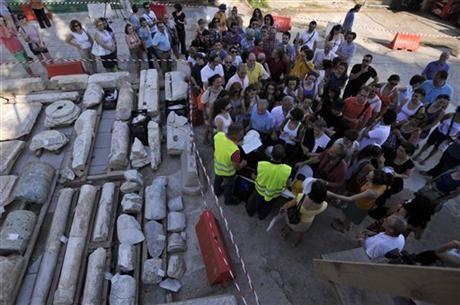In the northern Grecian port city of Thessaloniki, construction of a a new metro system unearthed a 1,800-year-old ancient Roman highway.
The 70-metre-long excavated section, which exposes children board games and wheel tracks etched into the marble pavement, opened to the public in late June. As the city's main artery, the Roman Via Egnatia connected Thessaoloniki, once the capital of Roman Greece, west to the Adriatic and east all the way to Constantinople.
Egnatia Avenue, the modern roadway, and the roads that radiate from it closely follow the route of the ancient highway, a testament to the skill of Roman road-makers, who levelled hills and filled in gorges to create smooth roads. The ancient highway system played an integral part in the Romans' ability to control and expand their empire, collect taxes and trade internally.
When the Thessaloniki metro opens, the ancient road will be raised from its current depth of 7 metres to street level and open as a permanent archaeological site. The metro is currently scheduled to open in 2016, though funding issues related to the Greek recession and delays due to archaeological findings have already pushed the completion date back by four years.
A 2300-year-old ancient Greek road below the Roman highway has also been discovered.









